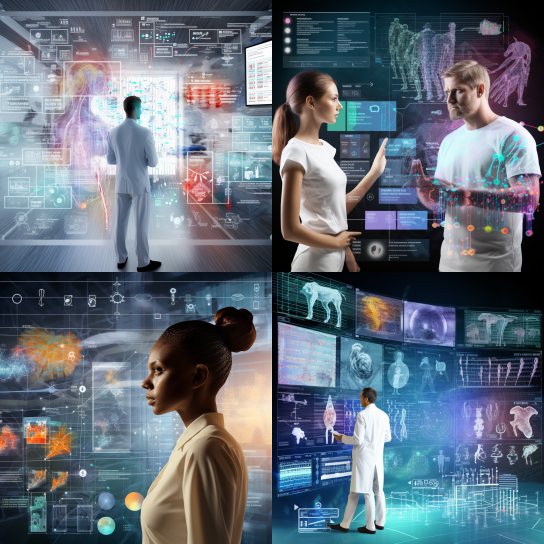AI and Climate Change: A Green Revolution in the Digital Age
Using AI to fight climate change
AI and Climate Change: A Green Revolution in the Digital Age
A Green Revolution in the Digital Age
How we’re applying the latest AI developments to help fight climate change and build a more sustainable, low-carbon world.
AI is a powerful technology that will transform our future, so how can we best apply it to help combat climate change and find sustainable solutions?
Understanding the impact of climate change on Earth’s ecosystems is very complicated. We’re using AI to help solve this big challenge. We’re working on ways to improve our understanding, make current systems work better, and speed up important scientific discoveries about climate change and its effects.
Real "AI Buzz" | AI Updates | Blogs | Education
Understand weather, climate, and their effects
It’s crucial to understand the main issues and how they affect the environment to address climate change. We partnered with the UK Met Office to create a new weather prediction model. This model, which predicts rain more accurately, is preferred by Met’s experts. Our research covers short-term (less than two hours) to medium-term (ten days) weather forecasting. This helps optimize renewable energy systems that rely on natural resources.
From modelling the behaviour of animal species across the Serengeti to supporting machine learning projects that advance conservation projects in Africa, we’ve been helping scientists track and better understand the effects of climate change on ecosystems and biodiversity. Going forward, our team is also building upon AI systems used to identify bird song in Australia, helping advance tools that monitor changing wildlife at scale.
Moreover, we’re partnering with non-profit Climate Change AI to close important gaps in climate-related data. Currently, this partnership focuses on building a comprehensive wishlist of datasets whose availability would advance AI solutions for climate change. We’ll make this wishlist available to the wider public when it’s complete.
Optimise existing systems
While we transition to more sustainable infrastructure, we need to optimise the systems the world depends on today. For example, today’s computing infrastructure, including AI itself, is energy-intensive. To help solve some of these issues, we’ve been developing AI that can enhance existing systems, including optimising industrial cooling and more efficient computer systems.
Given our energy grids are not yet running on clean energy, it’s important we use our resources as efficiently as possible while we work on the transition to renewables. Accelerating the global transition to renewable energy sources can also greatly reduce carbon emissions.
In 2019, our climate and sustainability team joined forces with experts at a Google-owned wind farm. Our goal was to make wind energy more valuable and help the industry grow. We created a special AI tool to predict wind power output accurately. Another model suggested how much energy to supply to the grid. This tool significantly increased the value of wind energy. Now, Cloud is turning this model into a software product. It’s currently being tested by the French power company ENGIE.
Accelerate breakthrough science
Beyond optimising our existing infrastructure, we need scientific breakthroughs to help us build a sustainable energy future. One particular area that holds great promise is nuclear fusion, an incredibly powerful technology with the potential to deliver limitless carbon-free energy. Fusion reactors are powered by a pressurised plasma of ionised hydrogen that is hotter than the core of the sun. The intense heat means this plasma can only be held by a rapidly adjusted magnetic field – a notoriously difficult engineering challenge.
Mastering the magnetic control of plasma is a fundamental part of solving the challenge to controlling the nuclear fusion process and harnessing the abundant green energy it could provide. So we collaborated with the Swiss Plasma Center at EPFL to develop an AI system that learned how to successfully predict and control plasma in a tokamak-style nuclear fusion reactor. And not merely to contain the plasma, but to ‘sculpt’ it into a range of experimental shapes.
Bring us your challenges
Creating useful AI solutions requires understanding global challenges. Researchers must access relevant data, work with experts, follow regulations, and find real-world testing opportunities. Collaboration with communities, scientists, professionals, and governments is vital for our sustainability efforts.
If you are an industry domain expert or climate scientist with a specific challenge to solve that could help the world understand, mitigate, or adapt to climate change, our climate & sustainability team would love to hear from you.
Read More









0 Comments on “AI and Climate Change: A Green Revolution in the Digital Age”